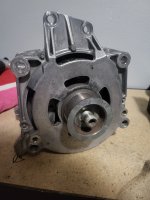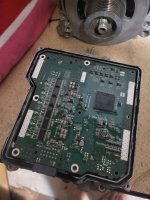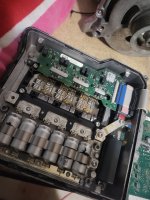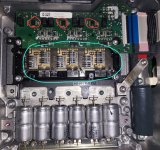Krafty_Hybrid
1 µW
Hello everyone, I'm currently trying to adapt the 48v eTorque motor off a Ram 1500 for use on another vehicle. I've already read through this thread on the subject. Follwing where that thread left off I first looked into talking to the OEM controller with CAN. I found some technical documentation on the controller and the unfortunate reality is that in the OEM application the motor only drives the engine during a start stop event. This obviously wont serve my needs as I want to have precise torque and regen control.
I've also considered buying a controller and doing away with the OEM one altogether. Probably the easiest solution but the price has me looking for other options.
This brings me to the lebowski contoller. I've done a little bit of reading up on the forum but there's a lot of information and I'm not sure where to start. I'm basically looking for any and all guidance I can get. How much does building a lebowski controller typically cost? I'm not an electrical engineer or anything like that, so will trying to make one be way over my head? Is there somewhere you'd reccomend starting to get my feet wet? Any and all help would be greatly appreciated.
There's also some pictures of what I'm working with
I've also considered buying a controller and doing away with the OEM one altogether. Probably the easiest solution but the price has me looking for other options.
This brings me to the lebowski contoller. I've done a little bit of reading up on the forum but there's a lot of information and I'm not sure where to start. I'm basically looking for any and all guidance I can get. How much does building a lebowski controller typically cost? I'm not an electrical engineer or anything like that, so will trying to make one be way over my head? Is there somewhere you'd reccomend starting to get my feet wet? Any and all help would be greatly appreciated.
There's also some pictures of what I'm working with







